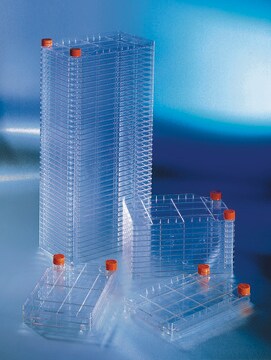ECM541
ECM Cell Culture Optimization Array (Colorimetric, 96-Wells)
About This Item
Produtos recomendados
técnica(s)
cell based assay: suitable
Nível de qualidade
entrada
sample type: human embryonic stem cell(s)
sample type epithelial cells
sample type mesenchymal stem cell(s)
sample type pancreatic stem cell(s)
sample type neural stem cell(s)
sample type: mouse embryonic stem cell(s)
sample type induced pluripotent stem cell(s)
sample type hematopoietic stem cell(s)
método de detecção
colorimetric
Descrição geral
How does the ECM Cell Culture Optimization Array work?
The foundation of our kit is a 96-well microtiter plate containing several commonly-used ECM proteins. Collagen I, laminin, fibronectin, and vitronectin are arrayed in triplicate with concentrations ranging from 0.125 μg/mL to 20 μg/mL. You simply culture your cells on the plate, and use the included reagents to block, stain, and analyze the adhesion capacity with a plate reader. We have extensively tested and optimized this kit on a variety of cell types including HEK293 cells, and human and rodent neural stem cells.
Aplicação
Cell Structure
Embalagem
Componentes
- ECM Gradient Array Plate: One 96-well plate with 12 strips
- 30%BSA: (Part No. CS201638) One vial - 0.5mL
- Cell Stain Solution: (Part No. 90144) One bottle - 20 mL.
- Extraction Buffer: (Part No. 90145) One bottle - 20 mL
- Assay Buffer: (Part No. 2003646) One bottle - 100 mL
Armazenamento e estabilidade
Informações legais
Exoneração de responsabilidade
Palavra indicadora
Danger
Frases de perigo
Declarações de precaução
Classificações de perigo
Eye Irrit. 2 - Flam. Liq. 2
Código de classe de armazenamento
3 - Flammable liquids
Certificados de análise (COA)
Busque Certificados de análise (COA) digitando o Número do Lote do produto. Os números de lote e remessa podem ser encontrados no rótulo de um produto após a palavra “Lot” ou “Batch”.
Já possui este produto?
Encontre a documentação dos produtos que você adquiriu recentemente na biblioteca de documentos.
Nossa equipe de cientistas tem experiência em todas as áreas de pesquisa, incluindo Life Sciences, ciência de materiais, síntese química, cromatografia, química analítica e muitas outras.
Entre em contato com a assistência técnica









